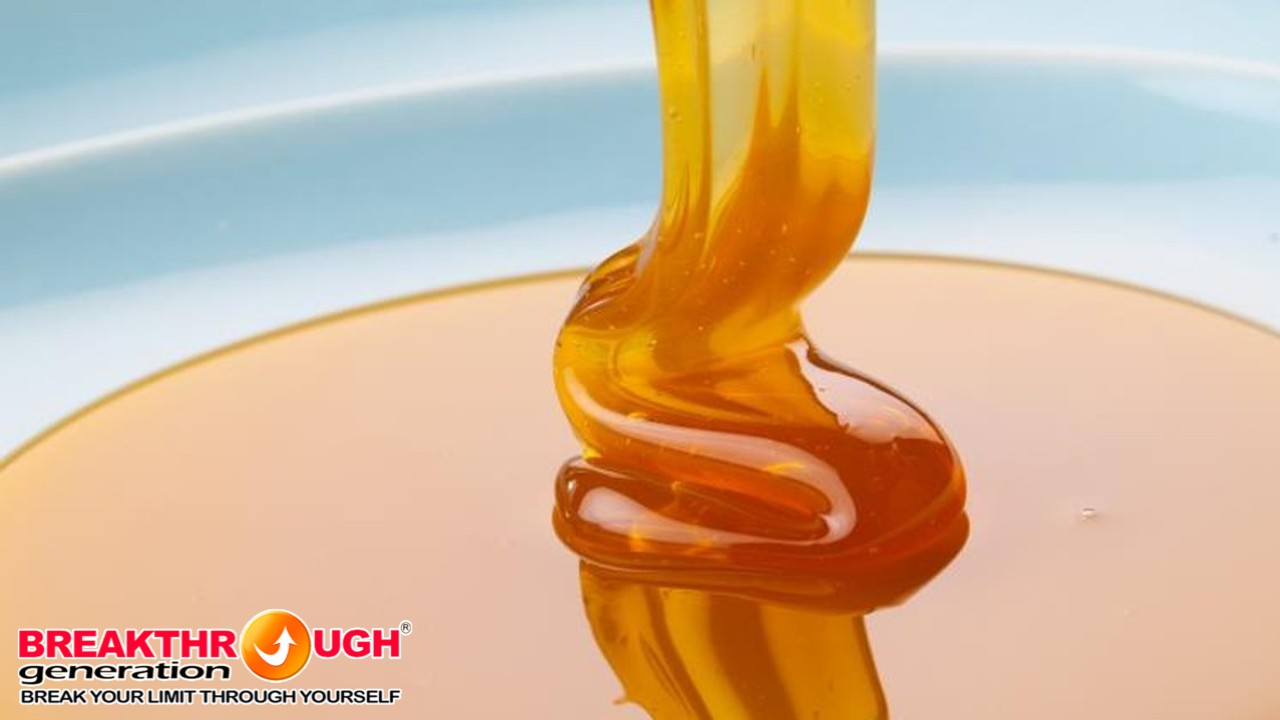HONEY: EVIDENCE BASE & MEDICAL JOURNAL
1. Antibacterial activity of honey against strains of staphylococcus aureus from infected wounds. R A Cooper, P C Molan and K G Harding.
Abstract
The antibacterial action of honey in infected wounds does not depend wholly on its high osmolarity. We tested the sensitivity of 58 strains of coagulase-positive Staphylococcus aureus, isolated from infected wounds, to a pasture honey and a manuka honey. There was little variation between the isolates in their sensitivity to honey : minimum inhibitor concentrations were all between 2 and 3 % v/v for the manuka honey and between 3 and 4% for pasture honey. Thus, theese honey would prevent growth of S. Aureus if diluted by body fluids a futher seven-fold to fourteen-fold beyond the point where their osmolarity ceased to be completely inhibitory. The antibacterial action of the pasture honey relied on release of hydrogen peroxide, which in vivo might be reduced by catalase activity in tissues or blood. The action of manuka honey stems partly from phytochemical component, so this honey might be more effective in vivo.
Abstrak : (Indonesia)
 Aktivitas antibakteri madu pada luka yang terinfeksi tidak tergantung sepenuhnya pada osmolaritas yang tinggi. Kami menguji sensitivitas dari 58 strain Staphylococcus aureus koagulase-positif, diisolasi dari luka yang terinfeksi, madu alami dan madu manuka. Ada sedikit variasi antara isolat dalam sensitivitas :
Aktivitas antibakteri madu pada luka yang terinfeksi tidak tergantung sepenuhnya pada osmolaritas yang tinggi. Kami menguji sensitivitas dari 58 strain Staphylococcus aureus koagulase-positif, diisolasi dari luka yang terinfeksi, madu alami dan madu manuka. Ada sedikit variasi antara isolat dalam sensitivitas :
konsentrasi inhibitor minimum antara 2 dan 3%v /v untuk madu manuka dan antara 3 dan 4% untuk madu alami. Dengan demikian, madu ini akan mencegah pertumbuhan S. aureus jika diencerkan dengan cairan tubuh lebih tujuh kali lipat menjadi empat belas kali lipat melebihi titik dimana berhenti osmolaritas. Tindakan antibakteri dari madu alami yang bergantung pada pelepasan hydrogen peroksida, yang secara in vivo dapat dikurangi dengan aktivitas katalase pada jaringan atau darah. Tindakan madu manuka sebagian berasal dari komponen fitokimia, sehingga madu ini mungkin lebih efektif dalam vivo.
2. Medical Journals buzzing over honey for wound care.
Recent studies are showing that Medihoney® may suceed where advanced drugs have failed. Two studies have shown Medihoney antibacterial honey based dressings to be a powerful tool in clearing wounds infected with multi-drug resistant bacteria including VRE and MRSA.
Dua penelitian telah menunjukkan aktivitas antibakteri madu menjadi alat yang ampuh dalam membersihkan luka terinfeksi dengan multi-obat bakteri resisten termasuk VRE dan MRSA.
3. Medical uses of honey. Amy E. Jeffrey, Carlos M. Echazarreta
This article reviews reports on the use of honey in the treatment of human disorders which are supported by clinical tests and published in medical journals. Firstly, the composition of honey is described, followed by a revision of its effect on the growth of several strains of pathogenic bacteria in laboratory tests. Finally, the influence of honey on gastroenteritis, gastric ulcers, wounds and other disorders is reviewed.
Artikel ini meninjau laporan tentang penggunaan madu untuk pengobatan manusia yang didukung oleh uji klinis dan diterbitkan dalam jurnal medis. Pertama, komposisi madu dijelaskan, diikuti oleh revisi efeknya pada pertumbuhan beberapa strain bakteri patogen dalam tes laboratorium. Akhirnya, pengaruh madu pada gastroenteritis, tukak lambung, luka dan gangguan lain ditinjau.
4. Why honey is effective as a medicine. 1. Its use in modern medicine, 2. The science underlying its effects
P.C. Molan
 Honey Research Unit,Department of Biological Sciences, University of Waikato, Hamilton, New Zealand These clinical observations are in line with the finding from comparative clinical trials and studies on wounds on experimental animals. In one case a patient with multiple ulcers on both legs had one leg dressed with honey and the other treated conventionally (with fibrinolysis and calcium alginate dressing): the ulcers on the leg treated with honey healed much more rapidly. In another case a patient with a long abdominal wound that had become infected following suegery had one end if the wound dressed with honey and the other end dressed with Debrisan (a modern hydrocolloid wound dressing material): it took 16 days with the Debrisan to reach the stage of re-growth of skin over the healing wound achieved after 8 days with the honey. For treatment of brust abdominal wounds following caesarean delivery, the period of hospitalisation required was 2-7 days (mean 4.5) for a group of 15 patients whose wounds were dressed with honey and closed with adhesive tape,compared with 9 -18 days (means 11.5) for the comparative group (19 patients) whose wounds were cleaned with antiseptic and re-stitched.
Honey Research Unit,Department of Biological Sciences, University of Waikato, Hamilton, New Zealand These clinical observations are in line with the finding from comparative clinical trials and studies on wounds on experimental animals. In one case a patient with multiple ulcers on both legs had one leg dressed with honey and the other treated conventionally (with fibrinolysis and calcium alginate dressing): the ulcers on the leg treated with honey healed much more rapidly. In another case a patient with a long abdominal wound that had become infected following suegery had one end if the wound dressed with honey and the other end dressed with Debrisan (a modern hydrocolloid wound dressing material): it took 16 days with the Debrisan to reach the stage of re-growth of skin over the healing wound achieved after 8 days with the honey. For treatment of brust abdominal wounds following caesarean delivery, the period of hospitalisation required was 2-7 days (mean 4.5) for a group of 15 patients whose wounds were dressed with honey and closed with adhesive tape,compared with 9 -18 days (means 11.5) for the comparative group (19 patients) whose wounds were cleaned with antiseptic and re-stitched.
Pengamatan klinis sejalan dengan temuan dari percobaan klinis komparatif dan studi tentang luka pada hewan percobaan. Dalam satu kasus pasien dengan ulkus di kedua kaki, salah satu kaki diolesi dengan madu dan kaki yang lain diperlakukan secara konvensional (dengan fibrinolisis dan kalsium alginat): ulkus pada kaki yang diobati dengan madu sembuh jauh lebih cepat. Dalam kasus lain pasien dengan luka perut panjang setelah operasi yang telah terinfeksi salah satu ujung luka diolesi dengan madu dan ujung lainnya dengan Debrisan (hidrokoloid modern ): butuh 16 hari dengan Debrisan untuk mencapai tahap pertumbuhan kembali kulit. Dan penyembuhan luka dicapai setelah 8 hari dengan madu. Untuk perawatan luka perut setelah melahirkan caesar, periode rawat inap yang diperlukan adalah 2-7 hari (rata-rata 4,5) untuk kelompok dari 15 pasien yang luka diobati dengan madu dan ditutup dengan pita perekat, dibandingkan dengan 9 -18 hari (berarti 11,5) pada kelompok pembanding (19 pasien) yang luka dibersihkan dengan antiseptik dan dijahit kembali.
5. Medical Honey for Wound Care - Still 'Latest Resort'?
 Arne Simon, Kirsten Traynor, Kai Santos, Gisela Blaser, Udo Bode, and Peter Molan Childresn's hospital Medical Centre, University of Bonn, Bonn, Institute for Bee Research, Celle, Germany and Departement of Biological Sciences, University of Waikato, Hamilton, New Zealand.
Arne Simon, Kirsten Traynor, Kai Santos, Gisela Blaser, Udo Bode, and Peter Molan Childresn's hospital Medical Centre, University of Bonn, Bonn, Institute for Bee Research, Celle, Germany and Departement of Biological Sciences, University of Waikato, Hamilton, New Zealand.
The current evidence confirming the antibacterial properties and additional beneficial effects of medical honey on wound healing should encourage other wound care professionals to use CE-certified honey dressings with standardized antibacterial acitivy, such as Medihoney TM products, as an alternative treatment approach in wounds of different natures.
Terbukti saat ini menegaskan sifat antibakteri dan efek tambahan madu dalam medis yaitu penyembuhan luka, yang seharusnya mendorong profesional dalam perawatan luka dengan menggunakan madu CE-bersertifikat antibakteri dengan akitivitas standar, sebagai pengobatan alternatif dalam penyembuhan luka.
